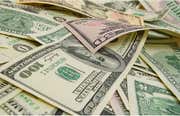
|
Measuring inflation is a difficult problem for government statisticians. To do this, a number of goods that are representative of the economy are put together into what is referred to as a "market basket." The cost of this basket is then compared over time. This results in a price index, which is the cost of the market basket today as a percentage of the cost of that identical basket in the starting year.
In North America, there are two main price indexes that measure inflation:
You can think of price indexes as large surveys. Each month, the U.S. Bureau of Labor Statistics contacts thousands of retail stores, service establishments, rental units and doctors' offices to obtain price information on thousands of items used to track and measure price changes in the CPI. They record the prices of about 80,000 items each month, which represent a scientifically selected sample of the prices paid by consumers for the goods and services purchased.
In the long run, the various PPIs and the CPI show a similar rate of inflation. This is not the case in the short run, as PPIs often increase before the CPI. In general, investors follow the CPI more than the PPIs.
Inflation: Inflation And Interest Rates
In North America, there are two main price indexes that measure inflation:
- Consumer Price Index (CPI) - A measure of price changes in consumer goods and services such as gasoline, food, clothing and automobiles. The CPI measures price change from the perspective of the purchaser. U.S. CPI data can be found at the Bureau of Labor Statistics.
- Producer Price Indexes (PPI) - A family of indexes that measure the average change over time in selling prices by domestic producers of goods and services. PPIs measure price change from the perspective of the seller. U.S. PPI data can be found at the Bureau of Labor Statistics.
You can think of price indexes as large surveys. Each month, the U.S. Bureau of Labor Statistics contacts thousands of retail stores, service establishments, rental units and doctors' offices to obtain price information on thousands of items used to track and measure price changes in the CPI. They record the prices of about 80,000 items each month, which represent a scientifically selected sample of the prices paid by consumers for the goods and services purchased.
In the long run, the various PPIs and the CPI show a similar rate of inflation. This is not the case in the short run, as PPIs often increase before the CPI. In general, investors follow the CPI more than the PPIs.
Inflation: Inflation And Interest Rates
Related Articles
-
 Trading
TradingPredict Inflation With The Producer Price Index
Find out how the PPI can be used to gauge the overall health of the economy. -
 Insights
InsightsDeadly Flaws in Major Market Indicators
These indicators give investors and experts some data to work with, but they're far from perfect. -
 Insights
Insights'Inflation' Is Not Just One Thing
Medical inflation, education inflation, housing inflation, apparel inflation: the headline number hides a lot. -
 Insights
InsightsThe Consumer Price Index Is a Friend to Investors
As a measure of inflation, this index can help you make key financial decisions. -
 Insights
InsightsShould You Worry About the U.S Inflation rate?
Understand how inflation is measured, how U.S. inflation compares to other countries, and if investors should be concerned with rising inflation. -
 Trading
Trading4 Key Indicators That Move The Markets
Do you rely on indicators to make an investment move? Find out these key economic and market indicators to watch and react to market movements. -
 Insights
InsightsWhy The Consumer Price Index Is Controversial
Economists are torn about how to calculate inflation. The Consumer Price Index is a popular, but controversial, measure of inflation in the U.S. -
 Trading
TradingHow CPI Affects the Dollar Against Other Currencies
Here's a look at the Consumer Price Index is a broad measure of inflation, and how it has a dramatic impact on a currency's value against rival currencies. -
 Personal Finance
Personal FinanceHow Inflation Affects Your Cost of Living
How will your wallet be impacted by inflation?


